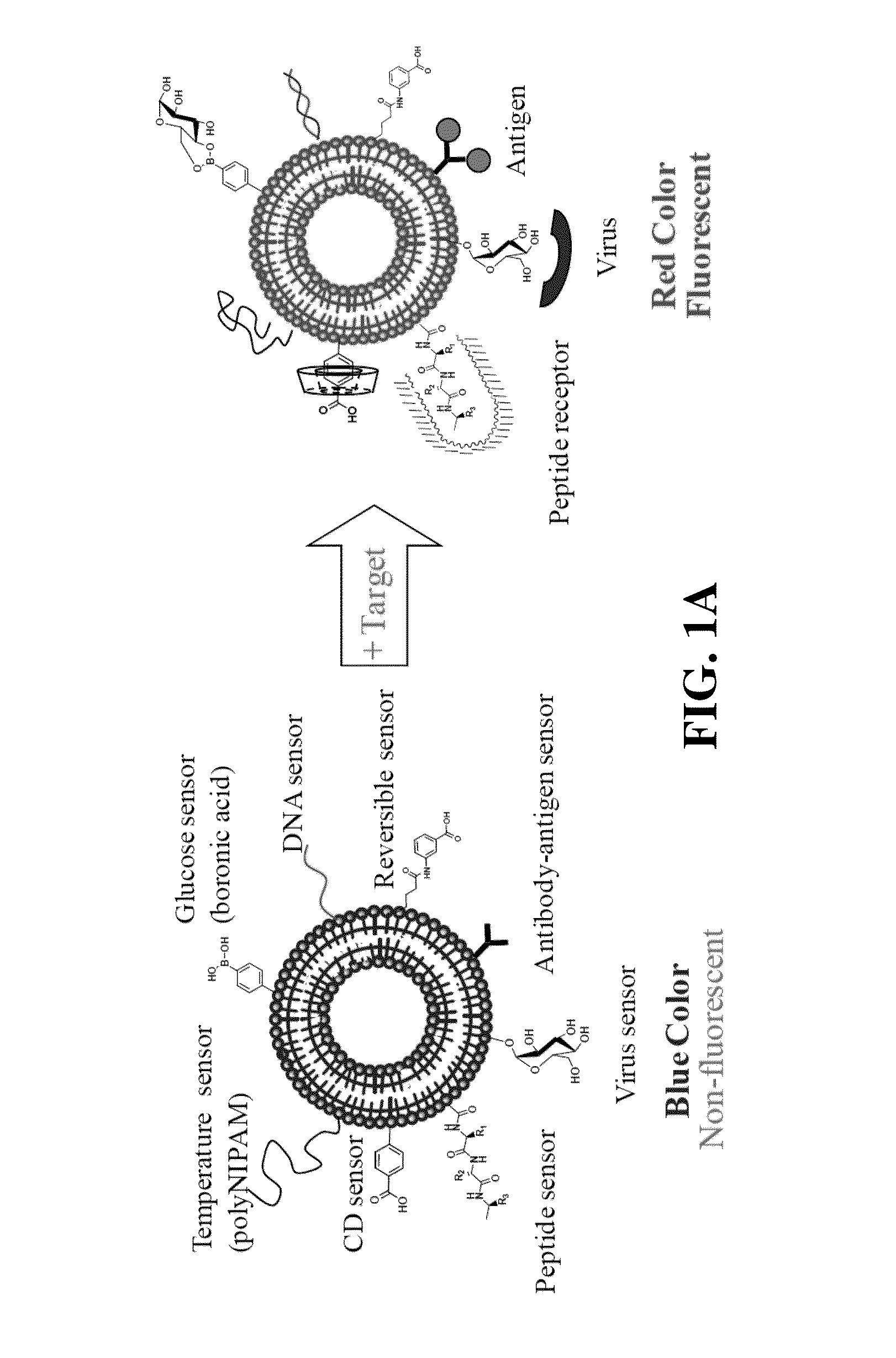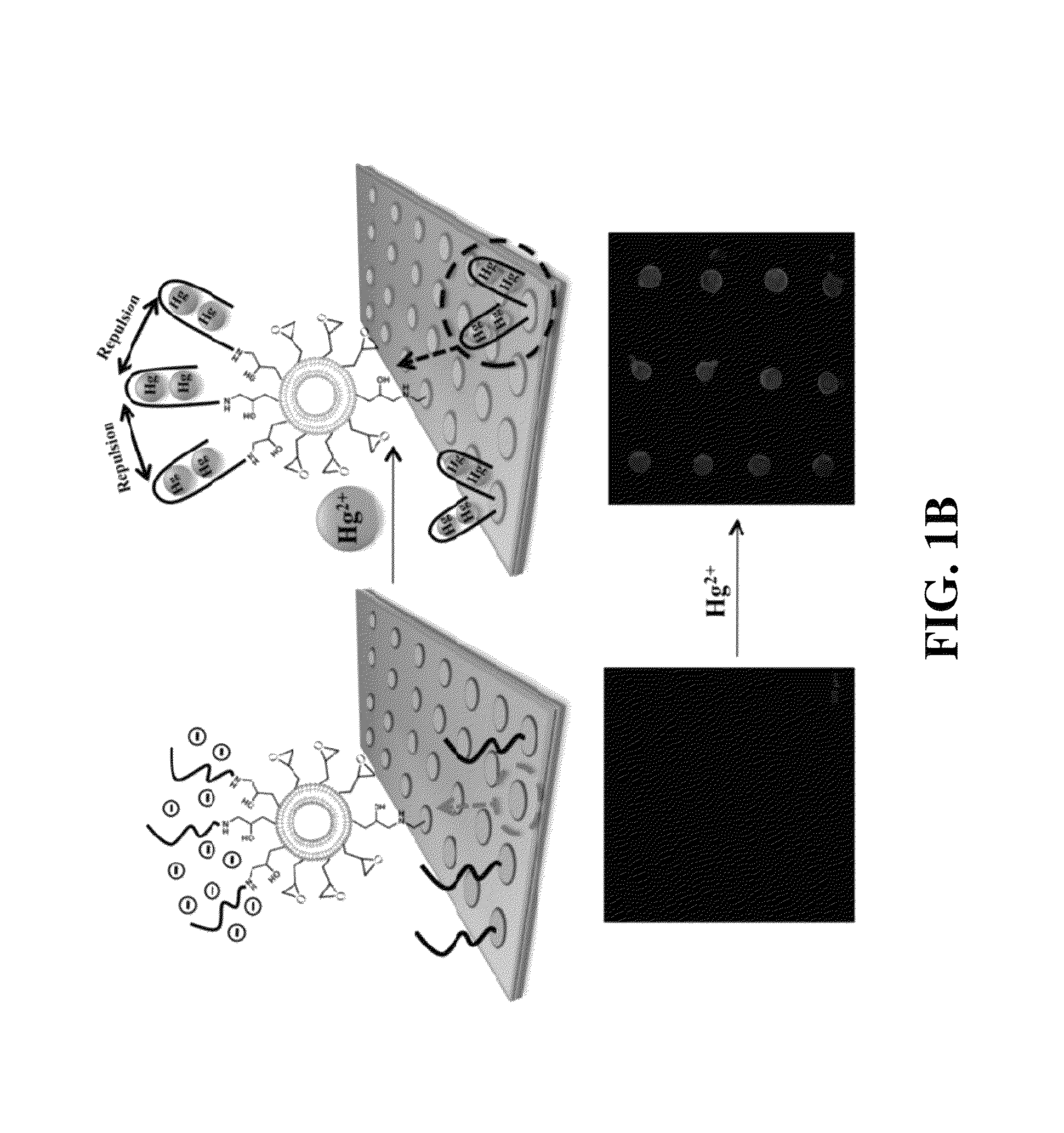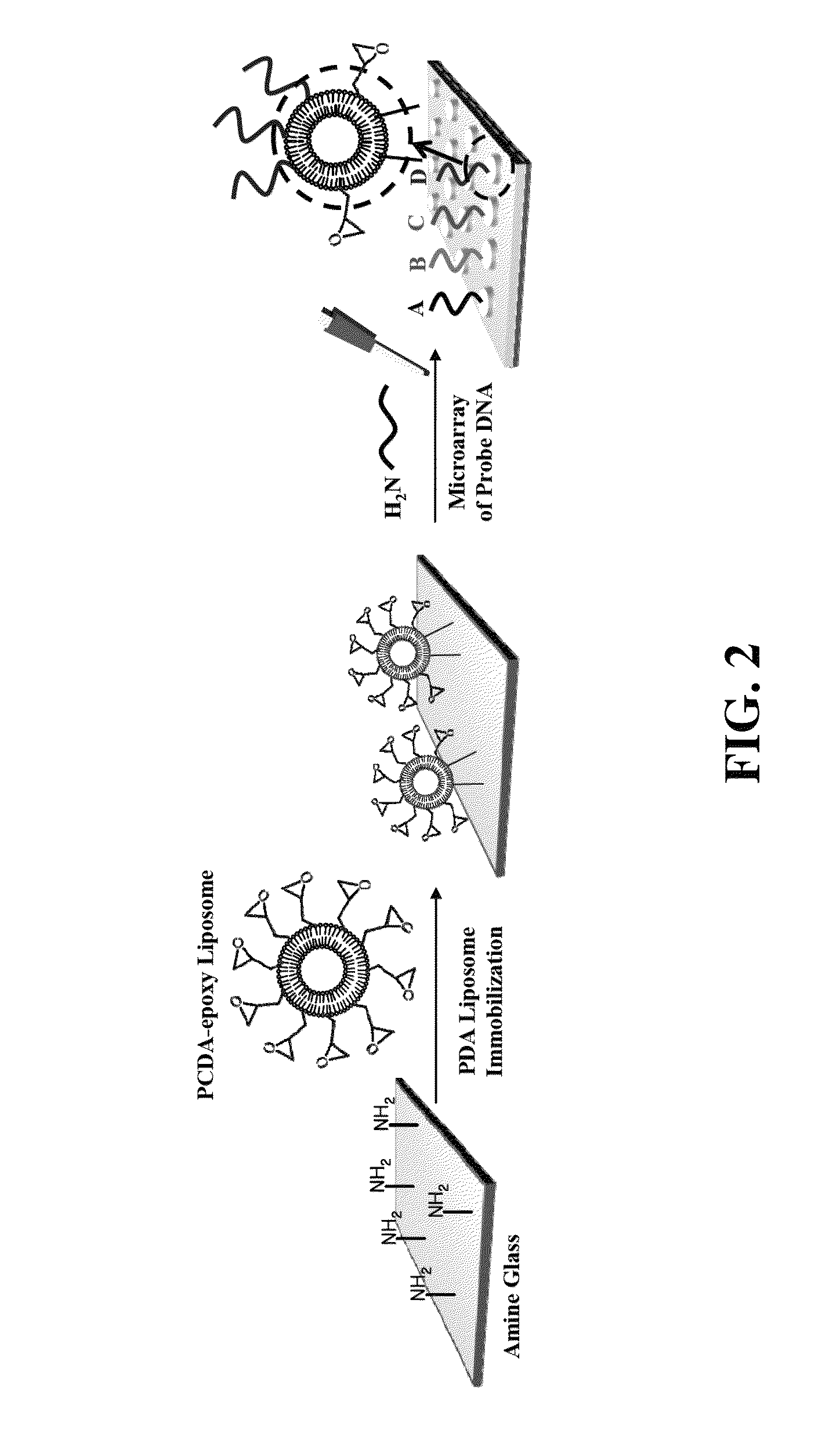Functionalized polydiacetylene sensors
a polydiacetylene and sensor technology, applied in the field of functionalized polydiacetylene sensors, can solve the problems of affecting selectivity, difficult to detect actual signals, and difficult to predict which species will be fluorescent, and achieve the effect of being chemically modified
- Summary
- Abstract
- Description
- Claims
- Application Information
AI Technical Summary
Benefits of technology
Problems solved by technology
Method used
Image
Examples
example 1
Detection of Potassium (K+) Using Polydiacetylene (PDA) Liposome-Based Microarrays
[0077]Polydiacetylene (PDA) liposome-based microarrays can be used to selectively detect potassium even in the presence of sodium and other ions using the sensing functionalized polydiacetylene constructs of the present technology. Potassium (K+) is an important cation in biology and quantitative detection of the extracellular potassium level in the blood stream is also important. The typical physiological concentration of potassium and sodium in the blood stream is about 3.5-5.3 mM and about 135-145 mM, respectively. However, selective detection of physiological potassium is a challenging task due to the presence of sodium in a much higher concentration. The present functionalized PDA liposome microarray sensor has coupled ssDNAs having a guanine-rich sequence SEQ ID NO: 1 (5′-GGTTGGTGTGGTTGG-3′) as a selective probe for potassium detection. The sensor utilizes the fact that the G-rich ssDNA can fold ...
example 2
Highly Emissive Self-Assembled Organic Nanoparticles Having Dual Color Capacity for Targeted Immunofluorescence Labeling
[0102]Highly emissive organic nanoparticles can be developed using colloidal self-assembly of a hydroxyphenyl-benzoxazole (HBO) derivative and diacetylene monomers. Various heterocyclic molecules including HBO possess thermal stability and high electron mobility. HBO has a high extinction coefficient and excellent stability in the UV range and can function as a UV stabilizer. HBO also can undergo excited state intramolecular proton transfer (ESIPT) upon photo-excitation, as illustrated in FIG. 13A.
[0103]The molecule 1,4-di(3-(benzoxazol-2-yl)-4-hydroxyphenyl)-2,5-dihexyloxybenzene (DBO), as shown in FIG. 13B, was synthesized. The absorption and photoluminescence spectra of DBO are shown in FIG. 14C. A dilute solution of DBO in tetrahydrofuran (THF) has an absorption λmax at 335 nm assigned to syn-enol and emits at 518 nm, showing a large Stokes shift due to excited...
example 3
Polydiacetylene Liposome Microarrays for Selective and Sensitive Mercury (II) Detection
[0137]PDA microarrays are designed for selective and sensitive mercury detection. Mercury (Hg2+) is a well-known neurotoxin, and its accumulation in the human body induces critical brain damage, resulting in blindness, deafness, memory loss, and death. Therefore, the allowable concentration of mercury in drinking water is strictly regulated to be less than 2 ppb. To detect mercury, various methods have been developed by means of gold nanoparticles, fluorophores, DNAzymes, proteins, and polymers. The present sensory PDA microarrays were developed based on self-assembling diacetylene molecules having an epoxy group to achieve a universal PDA platform for convenient post-tethering of receptors. The epoxy group provides a versatile functional group for bioconjugation with biological molecules by means of its reaction with seemingly ubiquitous amine groups found on biological molecules; e.g. proteins. ...
PUM
| Property | Measurement | Unit |
|---|---|---|
| diameter | aaaaa | aaaaa |
| excitation wavelength | aaaaa | aaaaa |
| humidity | aaaaa | aaaaa |
Abstract
Description
Claims
Application Information
 Login to View More
Login to View More - R&D
- Intellectual Property
- Life Sciences
- Materials
- Tech Scout
- Unparalleled Data Quality
- Higher Quality Content
- 60% Fewer Hallucinations
Browse by: Latest US Patents, China's latest patents, Technical Efficacy Thesaurus, Application Domain, Technology Topic, Popular Technical Reports.
© 2025 PatSnap. All rights reserved.Legal|Privacy policy|Modern Slavery Act Transparency Statement|Sitemap|About US| Contact US: help@patsnap.com



